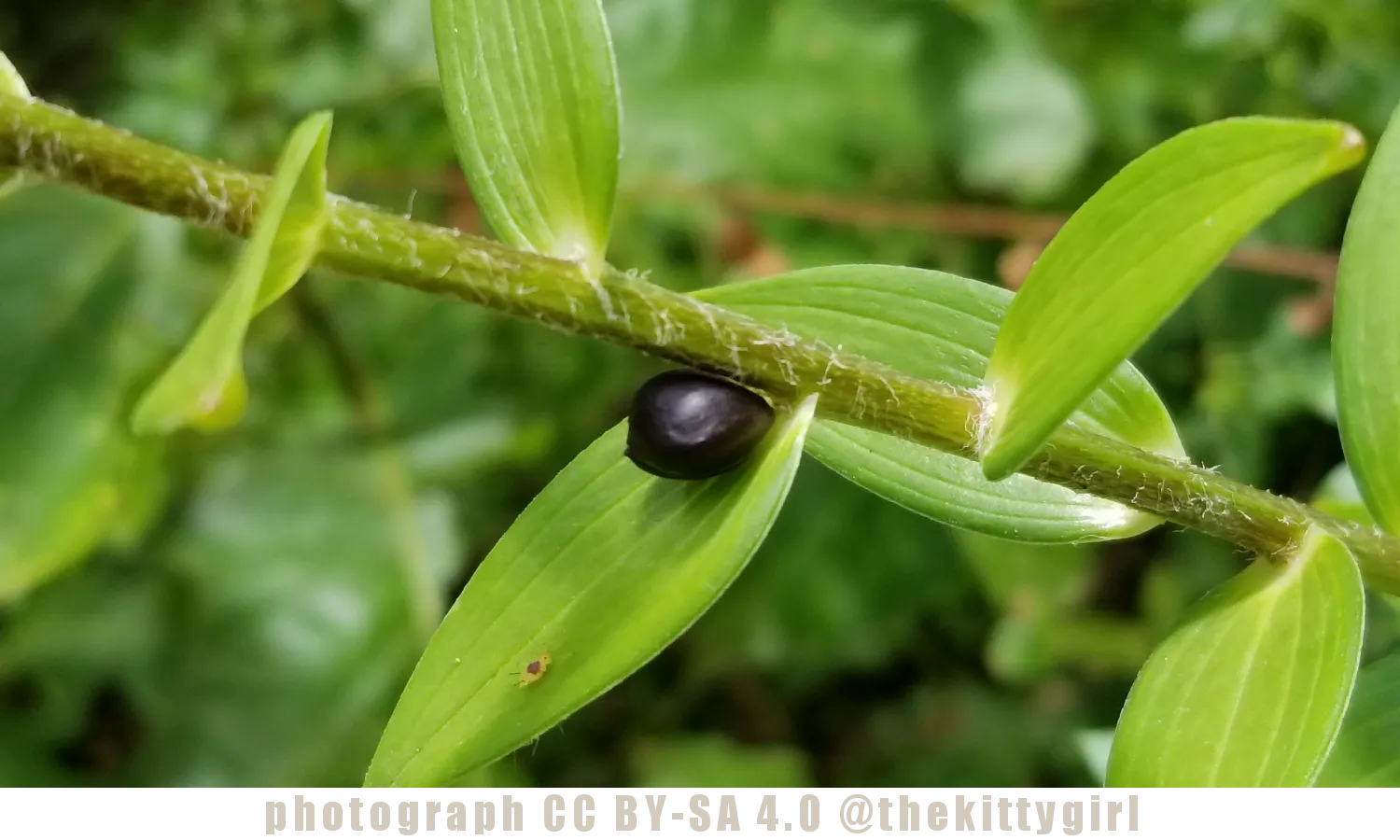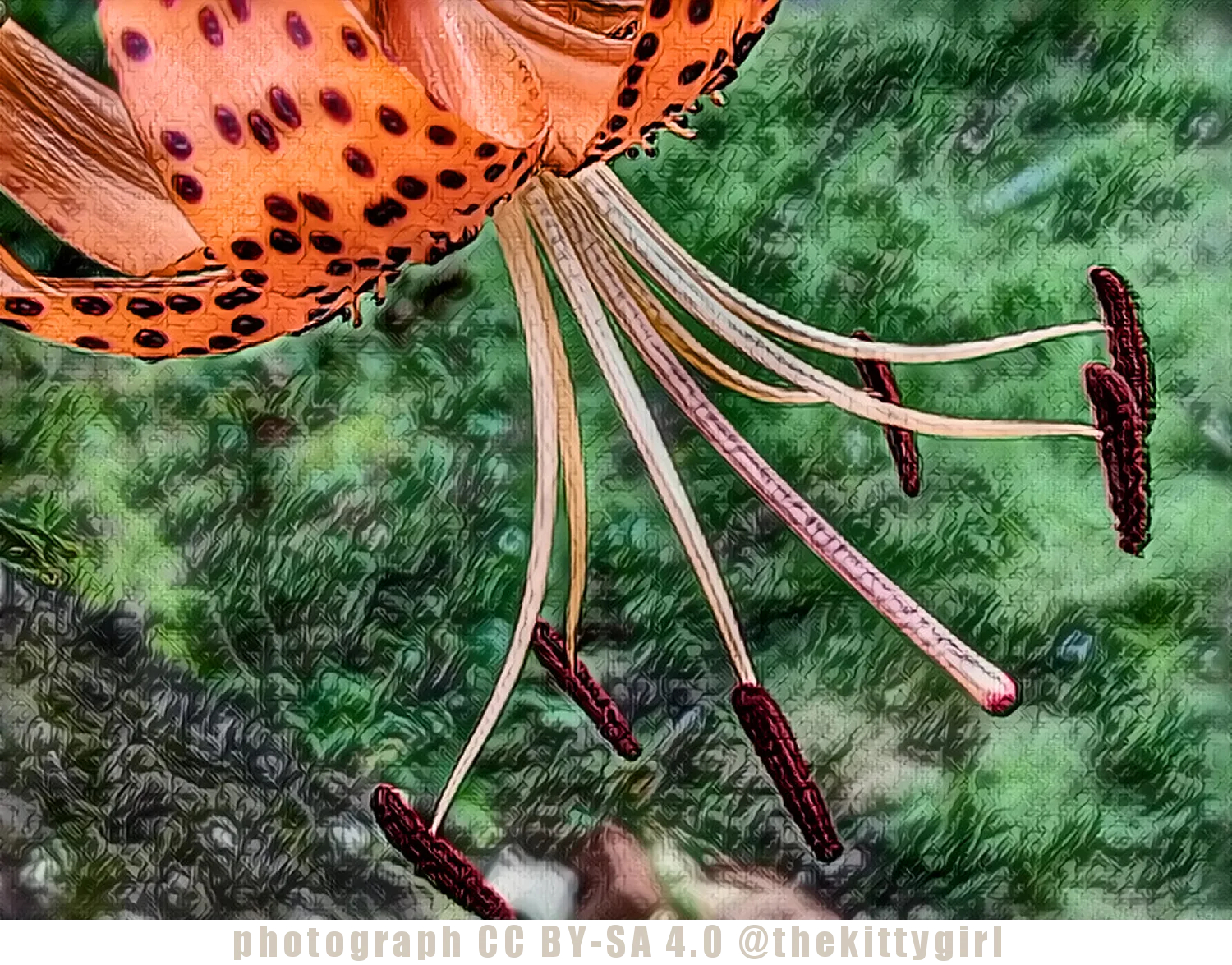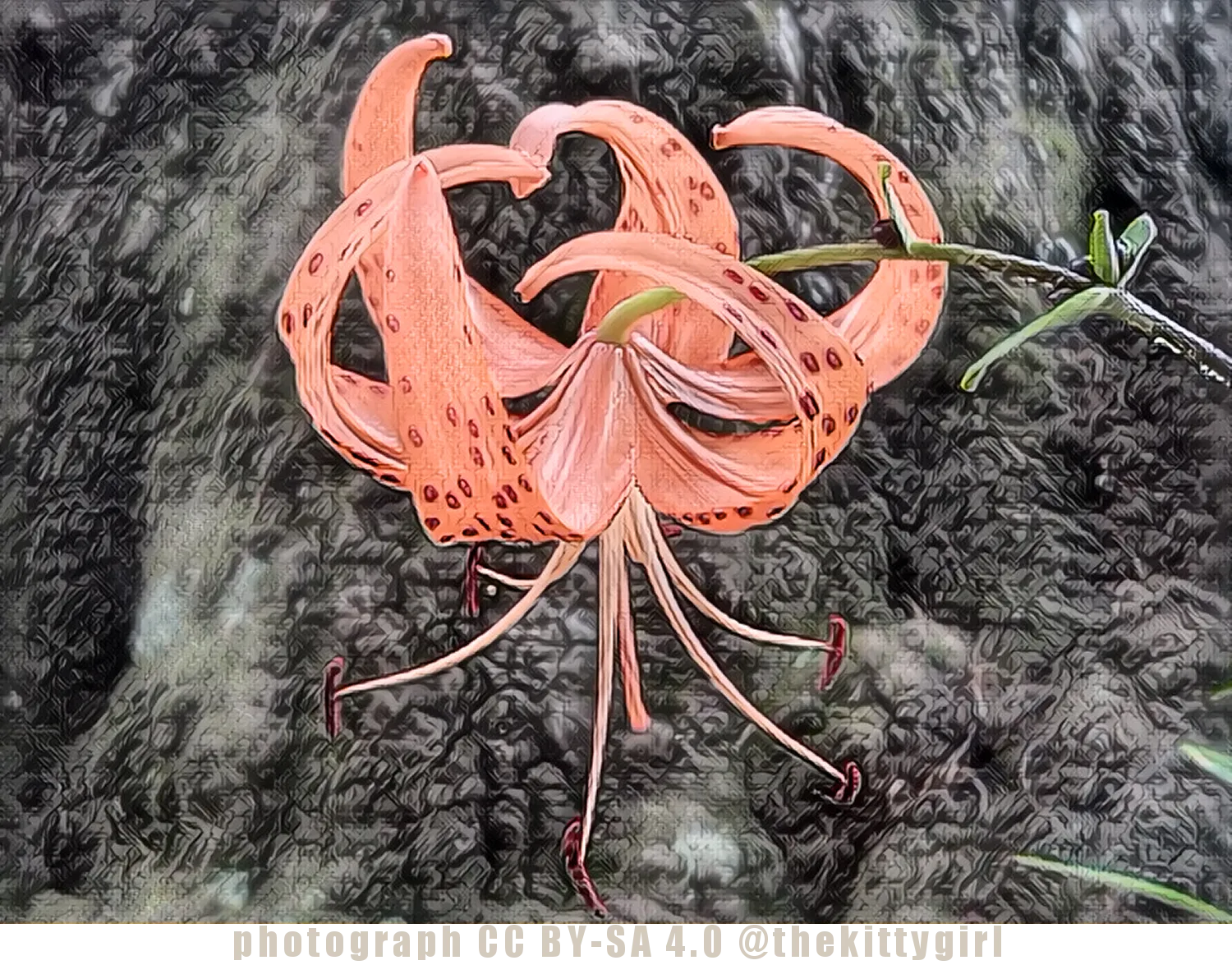I've always thought orange to be a cheerful color, the same as yellow. Not long after the common Day Lilies bloom, the Tiger Lilies start blooming, too, with bright orange flowers! Unlike most other species of lily, these plants have blooms that hang downward, facing the ground.

Oftentimes, several plant species can appear almost identical and only a few subtle differences distinguish them. Such is the case with this lily.
Some people might wonder: "What difference does it make whether this is a Tiger Lily or a Turk's Cap Lily? It's pretty, just enjoy it." Knowing the exact genus and species of various plants helps determine whether they are poisonous or not, whether they are edible or not, knowing whether they have any medicinal value or not, whether they're an invasive species or not, and how to care for them if you wish them to thrive. Plus, learning is fun, at least for some of us!
My parents always called this a Tiger Lily when I was a child, but I began to wonder, especially since I recently learned that the so-called "Chinese Hydrangea" bush in the yard is actually an "Oak-Leaf Hydrangea" and native to this area, not China! So, I've learned it best to always do my research.
Thanks to the Native Plant Trust's GoBotany project, I found an easy way to identify my lily with no problem, by looking at the leaves and the axils (where the leaves attach to the stalk of the plant).
🔸 Tiger Lily ٠ (Lilium lancifolium): leaves alternate, with bulbils in the upper axils
🔸 Turk's-Cap Lily ٠ (Lilium superbum): leaves whorled, without axillary bulbils


These lilies are rather tall. Most other lilies grow no more than knee-high, but these are easily waist-high on me, or higher! Some of my older Tiger Lily plants have flowers at chest-height! The single-stalk of the plant is often weighted-down by the flower and leans, so they seldom stand as tall as they would be if the stalks stood erectly.

⚠️ It is important to note that all parts of the Tiger Lily Lilium lancifolium are poisonous to cats. Eating one or two petals — or even drinking water from a vase in which tiger lilies have been — can result in severe kidney failure. In fact, all species of the Lilium genus are poisonous to cats, which I was horrified to learn since I am still looking after my sister-in-law's kitties. Only one of them goes outdoors, however, and fortunately does not seem curious about the many lily plans in the yard.

While researching for this post, I found a quite beautiful story.
A Korean folk tale tells of a hermit who helped a tiger who had been shot by an arrow. The hermit removed the arrow, and the tiger swore unending friendship in return.
When the tiger died of old age, the hermit used his power to turn it into a stunning tiger lily, keeping its beauty intact in memory. Once the hermit himself finally passed away, the tiger lily began to spread in search of its friend. Some say it’s still searching to this day. [source]
I have already shared the following photo in my blog, long ago, but I am re-posting it here with the Creative Commons licensing beneath. Enjoy! 😊

SOURCES 1 EpicGardening: Tiger Lily 2 GoBotany project: Lilium lancifolium 3 TheSpruce.com: Tiger Lily Profile 4 Wikipedia: Lilium lancifolium




to learn more about either of these projects, please visit: @heyhaveyamet or @theterminal
12-Jul-2020
Return from Tigers in My Yard! to 𝕜𝕚𝕥𝕥𝕪's Web3 Blog

